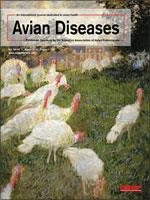Since their introduction to the United States in the late 19th century, mute swans (Cygnus olor) have become a nuisance species by causing damage to aquatic habitats, acting aggressively toward humans, competing with native waterfowl, and potentially transmitting or serving as a reservoir of infectious diseases to humans and poultry. In an effort to investigate their potential role as a disease reservoir and to establish avian health baselines for pathogens that threaten agricultural species or human health, we collected samples from 858 mute swans and tested them for avian paramyxovirus serotype 1 (APMV-1), avian influenza virus (AIV), and Salmonella spp. when possible. Our results indicate that exposure to APMV-1 and AIV is common (60%, n = 771, and 45%, n = 344, antibody prevalence, respectively) in mute swans, but detection of active viral shedding is less common (8.7%, n = 414, and 0.8%, n = 390, respectively). Salmonella was isolated from three mute swans (0.6%, n = 459), and although the serovars identified have been implicated in previous human outbreaks, it does not appear that Salmonella is commonly carried by mute swans.
Paramixovirus aviar serotipo 1 (virus de la enfermedad de Newcastle), virus de influenza aviar y Salmonella spp. en cisnes comunes (Cygnus olor) de la Región de los Grandes Lagos y en la costa atlántica de los Estados Unidos.
Desde su introducción a los Estados Unidos a finales del siglo 19, los cisnes comunes (Cygnus olor) se han convertido en una especie problemática, porque causa daños a los hábitats acuáticos, actuando agresivamente hacia los seres humanos, compite con las aves acuáticas nativas, y potencialmente puede transmitir o servir como reservorio de enfermedades infecciosas para los seres humanos y para las aves comerciales. En un esfuerzo por investigar su posible papel como reservorios de la enfermedad y para establecer líneas base de salud aviar para los patógenos que amenazan a las especies agrícolas o a la salud humana, se recolectaron muestras de 858 cisnes comunes y se analizaron para detectar paramixovirus aviar serotipo 1 (APMV- 1), virus de la influenza aviar (AIV) y Salmonella spp. cuando fue posible. Los resultados indican que la exposición a APMV -1 y al virus de influenza aviar es común en cisnes comunes (60%, n = 771, y 45%, n = 344, para la prevalencia de anticuerpos, respectivamente), pero la detección de la replicación viral activa es menos común (8.7%, n = 414, y 0.8%, n = 390, respectivamente). Se aisló Salmonella de tres cisnes comunes (0.6%, n = 459), y aunque los serovares identificados han sido implicados en brotes humanos anteriores, no parece que la Salmonella sea acarreada comúnmente por los cisnes comunes.





